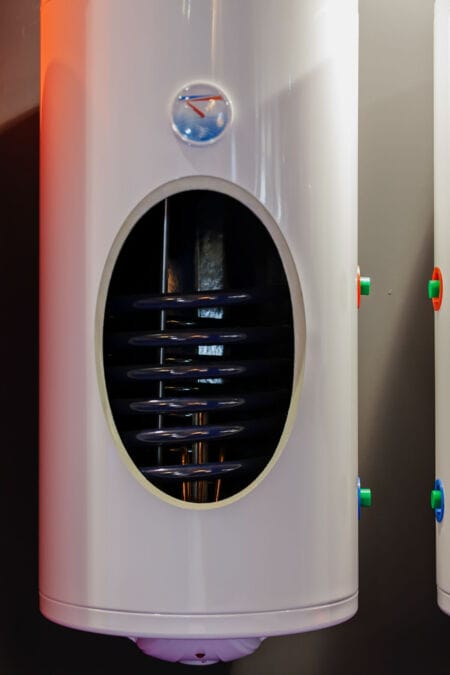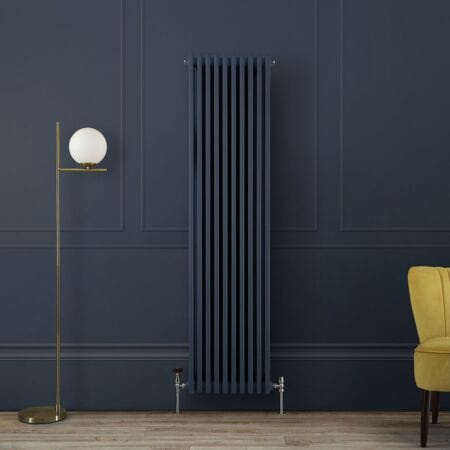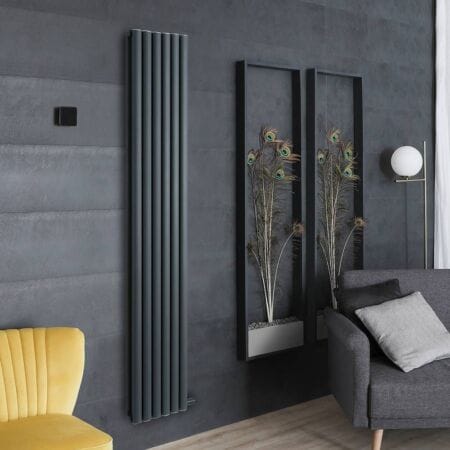Contents
ToggleWhat we'll cover...
The length of time required to successfully complete a heat pump installation, with a discussion of both air source and ground source heat pumps, what their fitting entails, and the potential levels of disruption caused by each.
Heat pump fitting timeframes
If you’re weighing up a heat pump investment, one of the very first things you’ll want to know is how long the installation will take, along with how much it will cost and how it will affect any other aspects of your home.
In short, British Gas estimates air source heat pump installations will take between two to five days, whilst GreenMatch suggests ground source heat pump fittings will take from one to three weeks to complete, mainly due to required groundworks.
- Air source heat pumps: 2–5 days on site
- Ground source heat pumps: 1–3 weeks on site
- Whole process (consultation → commissioning): several weeks overall
However, these timeframes are only attributed to when heating professionals are working onsite. From an initial consultation to the final commissioning certificate, the entire process can span several weeks, with volatility in line with surveys, installer availability, and if your existing electric heating solutions or radiators can work with heat pumps or need upgrading.
Our expert guide will break everything down step by step, so you’ll have no heat pump installation shocks or surprises, and can forward plan with the utmost confidence.

Phase 1: Heat pump pre-installation
The heat pump installation itself is only one part of the whole process. Before engineers arrive with their toolboxes, there’s preparation to do.
Initial consultation and quote
- An initial enquiry or phone consultation usually takes place within 1-2 days of a serious heat pump enquiry.
- Installers will ask about your current boiler or heating system, hot water setup, property type, and heating requirements.
- A provisional quote usually follows within a week.
At this very early stage, it’s mostly about obtaining a sense of feasibility and cost estimate. For a detailed plan, you can then move onto a home survey.
Survey
The site survey is the backbone of any successful heat pump installation. It usually takes half a day on site, with a full report delivered in 1-2 weeks, depending on the workload of your chosen installer.
A good survey includes:
- Heat loss calculations (room by room) – a legal requirement under MCS standards.
- Radiator and pipework checks – to ensure your system can run at the lower flow temperatures needed for an efficient performance.
- Electrical assessment – to make sure your consumer unit can handle the pump load.
- Space review – to confirm whether you have enough outdoor space for an air source unit or land/boreholes for a ground source heat pump system.

Phase 2: Heat pump installation
Air source heat pump timeline
According to All Seasons Energy, most air source heat pump fittings are completed in two to five days, depending on the complexity of the system.
Day 1: Site preparation & old system removal
- Engineers clear the outdoor space.
- Old boilers, tanks, or pipework are removed from the site.
- Can take a full day if major adjustments or removals are required.
Day 2: Outdoor unit installation
- Heat pump unit fixed to a wall bracket or set on a concrete pad on the floor.
- Pipework fed into the property.
Day 3-4: Indoor components & connections
- Hot water cylinder to be installed if replacing a combi boiler.
- Pipework integrated with radiators or underfloor heating.
- Electrical connections and control systems wired in.
Day 5: Testing & optimisation
- Engineers flush and perform a pressure check on the system.
- Smart heating controls and smart thermostats are programmed.
Ground source heat pump timeline
Ground source systems have a far more involved installation process, mainly due to excavation. GreenMatch estimates a period of one to three weeks, depending on whether a trench or borehole design is to accommodate the fitting.
Week 1: Groundworks
- Horizontal trenches dug (large garden space required) or boreholes drilled.
- This can take from five to 10 days, depending on weather conditions and availability.
Week 2: Pipe loop installation
- Ground loops fed into trenches or boreholes.
- Connections formed to the manifold and buffer tank.
Week 2–3: Indoor unit & integration
- Heat pump installed indoors.
- Cylinder and pipework connected.
- System integrated with radiators or underfloor heating.
Final stage: Testing and handover
- The same process as with an air source heat pump, but with extra checks performed due to the ground loop complexity.

Phase 3: Post installation
Once the heat pump has been put in place, there’s still work to do.
Commissioning
The installer will fill and pressurise the system, inspect for leaks, balance flow rates, and set the control logic. This will typically take one to two days to complete.
Demonstration & handover
A qualified engineer will demonstrate:
- How to operate your new system.
- How to set schedules using a smart thermostat.
- Basic heat pump maintenance
- Checks you can perform yourself.
Paperwork & certification
- MCS certificate – required for government grants (Ofgem).
- Building regulations compliance certificate.
- Warranty registration with the heat pump manufacturer.
This admin will typically take a few hours to complete, but it is vital for ensuring your system is recognised and eligible for heat pump grants such as the Boiler Upgrade Scheme (BUS).

What factors can affect the installation timeline?
Even with averages, every home is different. Here are the main things that can add (or shave off) time:
Factor | Impact | Example |
Heat pump type | Ground source takes longer due to excavation. | An air source install = 3 days; a borehole GSHP = 3 weeks (GreenMatch). |
Property size & complexity | Larger homes = more pipework and higher-capacity pumps. | A 2-bed terrace install is far quicker than a 6-bed farmhouse. |
Upgrades to radiators or pipework | Adds days if multiple radiators need replacing. | Replacing 10+ radiators = +2–3 days (Which?). |
Installer availability & schedule | High demand can delay start dates. | In winter, waiting times often extend several weeks (Energy Saving Trust). |
If your property requires electrical upgrades or radiator replacements, sort these before the installation begins. It can shave one or two days off the project.
Plan your heat pump installation with bestheating
So, how long does a heat pump installation take? While installation time varies, the key is to plan well ahead to ensure it’s a predictable and manageable process.
Ready to take the next step? Explore an array of extra heat pumpspump and other green heating resources in the BestHeating Advice Centre:
- How much does it cost to install a heat pump?
- A homeowner’s guide to maintaining your heat pump
- Ground source vs air source heat pumps: Which is right for your home?
- Sustainable home heating tips: A quick guide to cut your carbon footprint
Be sure to let us know about your energy efficient heating upgrades in the comments below, or get in touch with us via Instagram, Facebook or X.
John is a Research Specialist for the Best Heating Advice Centre, where for over nine years he has dedicated himself to demystifying home heating for our customers. He specialises in creating clear, data-driven guides and how-to articles by collaborating directly with our team of certified heating experts and product engineers.
His work, built on a foundation of journalistic research, has helped millions of readers make confident and informed decisions about their home heating. When he’s not breaking down the heat output differentials from radiators to heated towel rails, John fancies himself as a fine football and music connoisseur.




